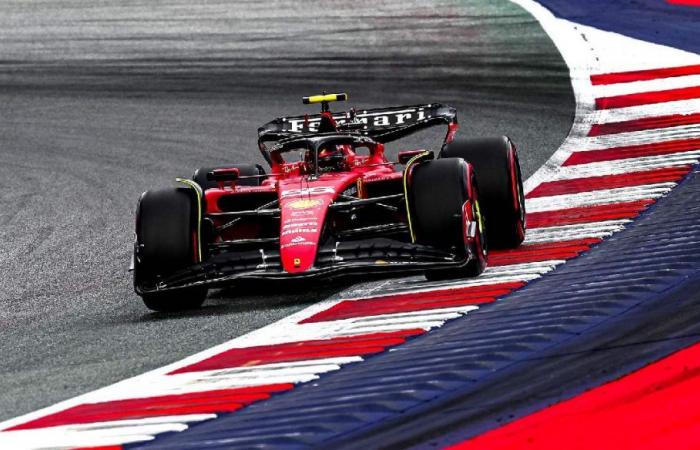And we are at two of weekend in a row poorly managed. Let’s talk about Ferrari which was not able to extract the maximum performance from the SF-24nor in Canada nor even less so in Spain. “Steps” to the track Montreal where the weather conditions were changing and generally adverse. While for the Catalan route the faults are a little more serious, as the sun shone on the Iberian facility and the technicians prancing Horse brought a new package of updates: rear wing, slimmed bellies and bottom revised in various areas, including the keel. But as mentioned, things went in the wrong direction. The opponents especially thanked him Mercedescapable of “snatching” the podium from the redhead who was ultimately within reach.
Not even time to think about it and the bandwagon of F1 he’s back in the news. Gp d’Austriaeleventh stage of the competitive campaign 2024: the track owned by the top of the class. The Red Bull Ring it is a very peculiar track, old fashioned so to speak. First of all, it is quite short and this feature means that the gap among the opponents, net of competitiveness, is certainly reduced. To this we must add a factor: the performance convergence that has now taken root in the paddock since a few weeks. McLaren he reached Red Bull and in certain cases the MCL38 they are even going faster. A bad blow for Verstappen who thought he would take home his fourth world title with his arm out the window.
But no: the Dutchman must use all his talent. This taking into account that his partner, born Sergio Perezafter the announcement of the renewal for two years with the team of Milton Keynesinstead of feeling reassured and giving his all, he has in fact fallen into a limbo. A sort of “competitive sadness” that is difficult to interpret. Yet he too is holding the steering wheel of the RB20. Maybe. Max is pulling the cart in a big way, “assisted” in this task by the team of Woking which proved incapable of optimizing the material available. It’s a shame, the championship would be much more interesting if she had succeeded.
F1, Ferrari’s problems in Spain
A step back to the Spain to explain what happened to the Ferrari. There was talk of porpoising as a possible cause of a less than brilliant performance which would have damaged the performance of the red car in the corners supported at high speed. He said it anyway Sainz, at the end of the qualification, claiming that this argument had an impact on the weekend. In this regard, an argument is needed. Ferrari has overturned the structure of the SF-24 between Friday and Saturday. He did it because the balance wasn’t optimal. By expertly examining the various sessions through the use of on boarda slight pumping is evident only in turn 14, like Mercedescar flying in the third sector of the Spanish track.
Examining the rest of the support curves, the 3 and the 9, the bouncing was completely absent. Confirmation of the fact that, the headaches related to the performance of Italian cars, were strongly linked to an imprecise interpretation of the load installed on the car. A factor that significantly lowers confidence behind the wheel, as drivers are unable to push hard and obtain the set speeds. Then there is another element that had an impact. We refer once again to the use of tires. Ferrari was unable to produce a hysteresis cycle that could guarantee the correct and continuous operating temperature of the tire throughout the session.
All things considered, this does not mean that the updates of the Ferrari are wrong. On the contrary, as you firmly reiterated Frederic Vasseur, the data collected regarding the new components reflected on the track what was hypothesized in the simulator. The headache in this case has its roots in the same theme: the inability to optimize the setup of the cars with the upgrade on board. Scope relating to track side, as the problems that emerged are precisely attributable to the less than optimal work carried out on the track by drivers, technicians and engineers. It is never easy to validate a update. Aerodynamic modifications generate a change in the pressure field around the car which in turn modifies the balance: just what happened to the redhead.
F1, Austrian GP: Ferrari optimizes the fast sections of the track
In the first sector of the Red Bull Ring There is only one 90° bend which requires good stability when braking, the strong point of the Ferrari thanks to the solidity of the front-end. A sloping bend that generates oversteer where the rear of the car can be a bit unsteady. Considering the extension that follows, traction is crucial. The team Of Maranello will have to get the aero-mechanical compromise right to limit excess rotation and enjoy good rear grip. The second braking point on the track, turn 3 which opens the second sector (turn 2 is practically a straight), follows the first in every way. We thus arrive at , where a banking negative that pushes the car outwards.
A characteristic of the asphalt that generates understeer that can turn into oversteer when exiting due to the greater steering angle. The grip of the front end is essential to anticipate the acceleration as much as possible. Another important curve is the 6th, on the left and very fast, where a lot of speed at the apex is needed, provided by a stable aerodynamic platform. The T3 takes shape with two other very fast and successive bends, where the trajectory of the first affects the performance of the second. The same goes for the last two bends of the track.
At this point the vertical thrust produced by the car will be of vital importance, as it must be balanced between the two axes to raise the speeds as much as possible. Equally essential is the ability to go early on the brake pedal. gas to have good traction. Let’s talk about two factors that will make a big difference on a chronometric level. Ferrari has chosen the most used rear wing so far. Specification introduced a Imola with the modifications inherent to the external area (wing tips), useful for lowering the resistance to advancement and keeping the load level intact. Version that requires a correct version of beam wing to complete the downforce. Ferrari chose a slightly stiffer rear suspension setup.
The aim is to stabilize the excursions of the surface during the movement of the vehicle to maximize speed without affecting traction too much. Il team Italian aims to consolidate performance in the sections of the track most suited to its characteristics. We mean the fast and supported curves where grip and stability have never been lacking. A choice which also aims to increase the top speeds of the SF-24 to combat the excellent aerodynamic efficiency of Red Bull e McLaren which, unlike the red one, by exploiting a more effective aerodynamic penetration coefficient, can afford a few load points at the most at the rear of their single-seater






